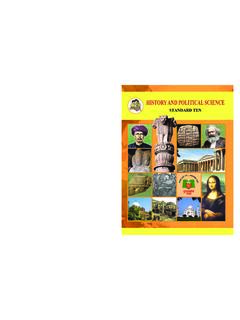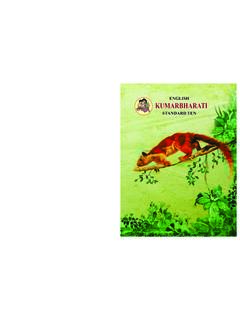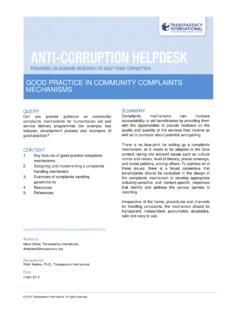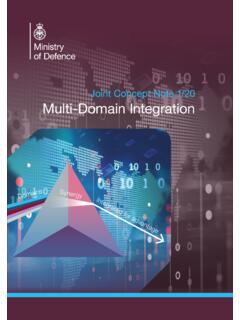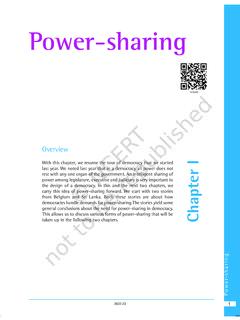Transcription of STANDARD NINE - MPSC Material
1 HISTORY AND POLITICAL SCIENCE. STANDARD nine . Maharashtra State Bureau of Textbook Production and Curriculum Research, Pune. B{Vhmg d am `em B. 9 dr (B J Or _m `_) The Coordination Committee formed by GR No. Abhyas - 2116/( ) SD - 4. Dated has given approval to prescribe this textbook in its meeting held on History and Political Science STANDARD nine Maharashtra State Bureau of Textbook Production and Curriculum Research, Pune. The QR Code given alongside and on other pages can be scanned with a smartphone, which leads to link/s (URL) useful for the teaching/learning of this textbook. First Edition : 2017 Maharashtra State Bureau of Textbook Production and Curriculum Research, Pune - 411 004. The Maharashtra State Bureau of Textbook Production and Curriculum Research reserves all rights relating to the book. No part of this book should be reproduced without the written permission of the Director, Maharashtra State Bureau of Textbook Production and Curriculum Research, Balbharati', Senapati Bapat Marg, Pune 411004.}
2 History Subject Committee Authors Cartographer Dr Sadanand More, Chairman Dr Ganesh Raut Shri. Ravikiran Jadhav Dr Vaibhavi Palsule Shri. Mohan Shete, Member Cover and Illustrations Scrutiny Shri. Pandurang Balkawade, Member Shri. Mukim Shaikh Dr Ganesh Raut Shri. Bapusaheb Shinde, Member Shri. Balkrishna Chopde, Member Translation Shri. Prashant Sarudkar, Member Prof. Arati Khatu Typesetting Shri. Mogal Jadhav, Member-Secretary Dr Padma Mehta DTP Section, Balbharati Shri. Sushrut Kulkarni Paper Civics Subject Committee Coordination 70 GSM Creamwove Dr Shrikant Paranjape, Chairman Mogal Jadhav, Print Order Special Officer, Prof. Sadhana Kulkarni, Member N/PB/2017-18/50,000. History and Civics Dr Mohan Kashikar, Member Printer Varsha Sarode Shri. Vaijnath Kale, Member Subject Assistant, M/s. Shree Samarth Quality Shri. Mogal Jadhav, Member-Secretary History and Civics Works, Navi Mumbai History and Civics Study Group Coordination Shri. Rahul Prabhu Dr Raosaheb Shelke Dhanavanti Hardikar Shri.
3 Sanjay Vazarekar Shri. Mariba Chandanshive Academic Secretary for Languages Shri. Subhash Rathod Shri. Santosh Shinde Santosh J. Pawar Smt Sunita Dalvi Dr Satish Chaple Subject Assistant, English Prof. Shivani Limaye Shri. Vishal Kulkarni Shri. Bhausaheb Umate Shri. Shekhar Patil Production Dr Nagnath Yevale Shri. Sanjay Mehta Sachchitanand Aphale Shri. Sadanand Dongre Shri. Ramdas Thakar Chief Production Officer Shri. Ravindra Patil Dr Ajit Apte Prabhakar Parab, Production Officer Shri. Vikram Adsul Dr Mohan Khadse Shashank Kanikdale, Asst. Production Officer Smt Rupali Girkar Smt Shivkanya Kaderkar Dr Minakshi Upadhyay Shri. Gautam Dange Smt Kanchan Ketkar Dr Vyankatesh Kharat Publisher Smt Shivkanya Patve Shri. Ravindra Jinde Vivek Uttam Gosavi, Controller Maharashtra State Textbook Bureau, Dr Anil Singare Dr Prabhakar Londhe Prabhadevi, Mumbai - 400 025. Preface Dear students, We have great pleasure in offering to you this Std IX textbook of History which deals with the period from the year 1961 to 2000.
4 This textbook is a part of the efforts being made to modernise the history curriculum. The book reviews the development that has taken place in India in the social, cultural and other areas since 1961. It needs to be remembered that this review is by no means detailed or complete. In fact, compelled by the limit on the number of pages in this textbook, it is a rather cursory overview of approximately forty years. It takes note of the economic policies of India which relate to industry and agriculture, of the empowerment of women and of development-related events connected with the weakest sections of society. It throws some light on the progress of the education sector and the changing ways of life of Indians. To help you understand the subject well, maps, pictures, statistical figures and extra information in separate boxes have also been given. In addition, a variety of activities have been suggested. This textbook will help you lay the foundation for the competitive exams you might take in the future or for higher education in history.
5 Your parents have been witness to the history discussed here. They could help you expand your understanding of this textbook. As part of the Political Science syllabus, you have to study the main currents in world events since 1945, the evolution of India's foreign policy, our security systems and the challenges before them today. We also discuss diplomatic relations between India and other countries, the United Nations, India's contribution to the peacekeeping efforts of the United Nations, etc. Certain problems faced by the international community, such as protection of human rights, protection of the environment, and terrorism have been introduced through this textbook. You will find this textbook of help in your efforts to understand all kinds of happenings at the international level. The study of history helps us understand the past and develop an awareness of the present. The study of political science helps us see the way forward into the future. The present textbook is meant to help you do all these things.
6 Pune Date : 28 April, 2017 (Dr Sunil Magar). Akshayya Tritiya Director Indian Solar Year : Maharashtra State Bureau of Textbook 8 Vaishakh 1939 Production and Curriculum Research, Pune. - For Teachers - First of all, you are to be congratulated that you are a teacher and also a student of History. This year, using this textbook, we have to teach the period of years from 1961 to 2000. You will especially enjoy dealing with this textbook because you have been a witness to several of the events mentioned here. This book includes the very events that have taken place around you. You will, in a way, re-live those times. This is the history of the whole of India. In view of the limited number of pages in the textbook, it is a difficult task to present the entire account of these years with any continuity. We have tried to include those events which would most appeal to students of Std IX at their age. Taking some important events as a framework, it will be possible to help students to learn about the intervening events using the Internet.
7 The central theme of this book is How a newly independent State sets itself on the road towards development'. This is a country which has the largest democratic system in the world. An attempt has been made to highlight the role played in the progress of such a country by the political and the administrative leadership, as well as by scientists, educationists and artists. Complementing this, is the other important part of this book, namely, the faith of the citizens of India in democracy and the fight put up by the general public in its defence. That every individual has a social responsibility and that the nation is bigger than the political leadership is the message that the public has always sent out in the post-independence period. To acquaint students with the meaning underlying the bare events is a big challenge before us. However, we believe that teachers will be able to shoulder this responsibility with ease with the help of the modern technology we have at our disposal today.
8 This is the first time that teachers will be teaching about the very period that they have themselves experienced. Hence, this itself is a historic task. This book will be of use to impress upon the students the important principle that every citizen can make a contribution to shaping post-independence India. Features of the textbook like maps, pictures, boxes with additional information and the suggested activities are to be used for this purpose. Our ultimate aim is to communicate effectively to the students the unique greatness of our country. In the subject of Political Science in this class, we will review the interactions between India and the World'. In these times, events occurring at the global and international level have consequences for all countries. Due to the advances in information technology, interaction and exchanges of many kinds between nations have increased greatly. We need to make the students aware of these complex international relationships from an India-centric viewpoint.
9 Naturally, it will be best to make a beginning through building an understanding of the important international events and currents from recent history. The content of the present book is new. However, it has been presented with a constructivist point of view so that it will be easily understood. To arouse interest in the subject, the content has been presented in a different way. As it will be the first time that students will be attempting to understand international relations, teachers too should take care to support their teaching with a variety of non-conventional sources. There is ample scope in the textbook for the effective application of such methods. It is expected that teachers will try to strengthen the faith of the students in values such as the preservation of global peace and security, respect for human rights, peace and mutual trust and the actions that are taken in accordance with them. CONTENTS. India after Independence (1961 ce to 2000 ce). No. Chapter Page 1. Sources of 1.
10 2. India : Events after 5. 3. India's Internal 10. 4. Economic 15. 5. Education .. 23. 6. Empowerment of Women and other Weaker 31. 7. Science and 37. 8. Industry and 43. 9. Changing Life : 47. 10. Changing Life : 52. Note to the maps : The following foot notes are applicable : (1) Government of India, Copyright : 2017. (2) The responsibility for the correctness of internal details rests with the publisher. (3) The territorial waters of India extend into the sea to a distance of twelve nautical miles measured from the appropriate base line. (4) The administrative headquarters of Chandigarh, Haryana and Punjab are at Chandigarh. (5) The interstate boundaries amongst Arunachal Pradesh, Assam and Meghalaya shown on this map are as interpreted from the North-Eastern Areas (Reorganisation) Act. 1971, but have yet to be verified. (6) The external boundaries and coastlines of India agree with the Record/Master Copy certified by Survey of India. (7) The state boundaries between Uttarakhand & Uttar Pradesh, Bihar & Jharkhand and Chattisgarh & Madhya Pradesh have not been verified by the Governments concerned.

